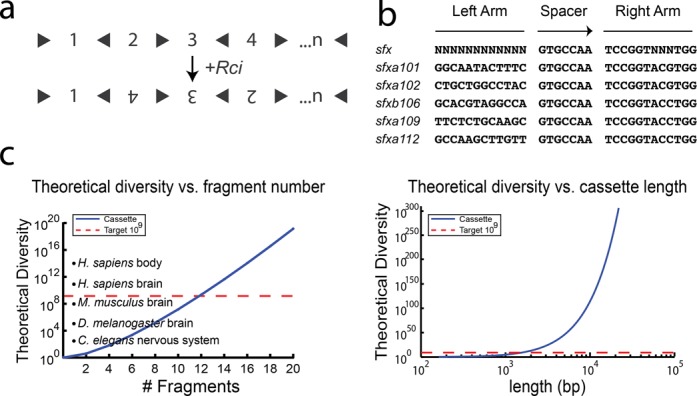Figure 2.

Design of Rci cassettes. (A) The Rci cassette is formed by concatenation of n sequence fragments, in which individual fragments are separated by a single sfx site—the orientation of which alternates between successive fragments. Upon Rci recombination, the cassette is shuffled. Because Rci cannot mediate excision events, the cassette remains the same length, but the relative position of each fragment within the cassette can change. (B) sfx sites share a central spacer sequence and right arm sequence, but have little sequence conservation in the left arm. Five different sfx sequences were used in this study. (C) The diversity of the Rci cassette as a function of the number of fragments, n. Cassettes with >20 fragments can generate sufficient diversity to label all cells in complex organs/organisms. (D) The diversity as a function of length for Rci cassettes (assuming 100bp fragments). Lengths ∼1–2 kb are needed to reach the requisite diversity of 109.
